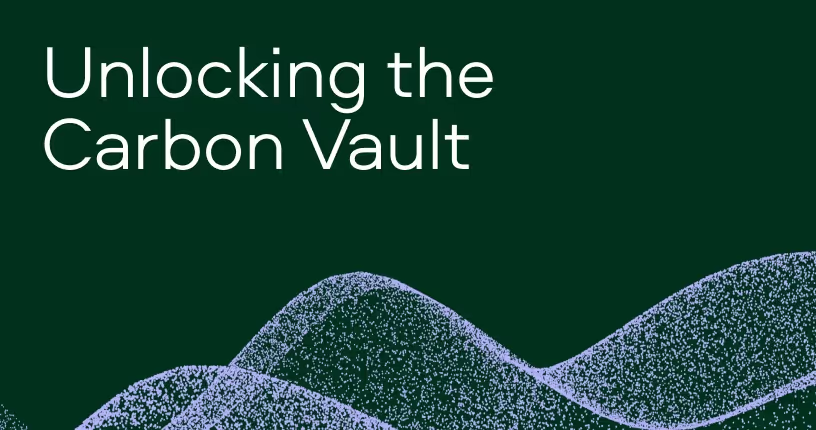“Over the years we’ve invested significantly in our field data team - focusing on producing trusted ratings. While this ensures the accuracy of our Ratings, it doesn’t allow the scale across the thousands of projects that buyers are considering.”
For more information on carbon credit procurement trends, read our "Key Takeaways for 2025" article. We share five, data-backed tips to improve your procurement strategy.

One more thing: Connect to Supply customers also get access to the rest of Sylvera's tools. That means you can easily see project ratings and evaluate an individual project's strengths, procure quality carbon credits, and even monitor project activity (particularly if you’ve invested at the pre-issuance stage.)
Book a free demo of Sylvera to see our platform's procurement and reporting features in action.
In the battle against climate change, nature stands as both a battleground and a sanctuary. The fate of our planet hinges not only on reducing emissions but also on harnessing the power of natural ecosystems to sequester carbon. However, accurately measuring these carbon stocks and their changes has long been a challenge, leading to possible underestimation of nature's true potential.
Unveiling Nature's Carbon Treasure Trove
New groundbreaking research, recently published in Communications Earth & Environment, led by a world-leading team of scientists and experts from Sylvera, University College London, NERC National Centre for Earth Observation (NCEO), University of Maryland, University of Edinburgh, University of Leicester and Mozambican researchers, and in collaboration with and co-financing from the Mozambique National Fund for Sustainable Development and The World Bank Group, used cutting-edge multi-scale lidar (MSL) technology to assess miombo woodlands in Mozambique and revealed a surprising insight; we might be significantly underestimating the carbon stored in nature.
By combining terrestrial and airborne data, using drones and helicopters, and laser scanning technology, we collected 450 billion 3D measurements from upwards of 8 million trees across miombo woodlands in and around Gilé National Park in Mozambique. Applying the latest advancements in machine learning, we found that these woodlands store between 1.5 and 2.2 times more carbon than previously estimated with traditional methods. Traditional methods rely on techniques known as allometrics, or simple measures of tree structure like stem diameter.



These findings have significant implications for our understanding of the role of Africa’s miombo woodlands in tackling climate change. The study extrapolated the results across their entirety, and it suggested that they could store double the amount of carbon previously thought, an uplift approaching the total atmospheric increase of carbon worldwide in a single year.
The study also suggests that destroying miombo woodlands releases far more carbon than we realized. This highlights the urgency to protect existing forests and prioritize restoration efforts. Just take Miombo as an example, where over the last 40 years, human activity has reduced these woodlands by nearly a third – an area 3 times the land area of the United Kingdom - (from 2.7 to 1.9 million km2).
From Underestimation to Empowerment
The implications of these findings reverberate across science, policy, finance, and business. If our current understanding of the carbon stored in nature is potentially biased downwards, this will lead to the undervaluation of forest protection and restoration efforts, hindering progress towards global climate goals.
The findings are important for several reasons, impacting policy, finance, and business sectors:
- Policy: More accurate data allows for better decision-making on climate change and nature loss. Governments can prioritize forest protection more effectively, allocating resources towards areas with the most significant carbon sequestration and emissions potential.
- Finance: Investors can gain confidence in overall natural capital investments, including forest-based carbon credits. The Sylvera study suggests that these credits have the potential to be more valuable than previously thought, which should unlock increased funding for forest conservation. This is crucial because currently, the world spends less than half the amount of funding needed by 2030 on ‘nature-based solutions’ like forest protection.
- Business: Companies can invest in carbon reduction strategies with greater certainty about the impact of forest-based projects. The ability to measure and verify the carbon storage potential of forests enables more informed decisions about offsetting their emissions through investments in nature-based solutions.
To put this data and novel techniques to use, our multi-scale lidar measurements help us produce the most accurate Ratings and Assessments of carbon projects. We apply these hyper-accurate measurements to projects with similar characteristics to these forests across the world and bring them to scale with machine learning models. As a result, we can compare independent estimates of forest carbon stocks, with project-reported values, to assess the likelihood and severity of over-crediting risk and ensure our customers are investing in real climate action.
Ultimately, as we continue to navigate the complexities of climate change, carbon credits, and the voluntary carbon market represent an important and vital tool for the private sector to achieve net zero as part of a strategic mitigation hierarchy and offer a critical path toward closing funding gaps and scaling finance for forests.
“Ultimately, fighting climate change is a finance issue. We need more money flowing to the known solutions, predominantly our natural carbon sinks. Yet, many investors simply don’t understand these types of investments, or are put off by lack of certain measurements and so avoid them. To help increase investor confidence, Sylvera has pioneered a new way to measure carbon stored in nature and is scaling those measurements with Earth observation data and machine learning models so that we can know the true impact of restoring it and the harmful effects of damaging it. Our team’s findings across miombo woodlands is a true testament to the power of how technology can help us better understand nature to expedite investment and make real net zero progress, because we’re simply running out of time.” Allister Furey, CEO and Co-founder of Sylvera
The road ahead
As climate change grows more pressing, the need to scale investment into nature is more pressing as well. The techniques we’ve developed help provide the confidence needed to understand and monitor the impact of those investments. Our hope is that these datasets will help answer the longstanding challenges of forest carbon stock monitoring.
By harnessing the combined capabilities of technology and science, we can generate high-integrity carbon credits so that we can scale finance to nature, build trust in the carbon markets, and inform sound policy-making and allocation of funding and resources. We’re continuing to build on these findings with further research to measure the carbon stored in above and below-ground carbon sinks, in the UK, Gabon, Australia, Belize, Cameroon, Peru, and more across the world. However, we can’t do this work alone.
Bringing these new methodologies and research to scale to the levels needed will take resources and research far beyond what we alone can tackle. That’s why we’re committed to sharing our data and findings to encourage others to help us in uncovering much more accurately how much carbon is stored in our environment. If you’re interested in supporting our work to help it scale, reach out to our research partnerships team.















